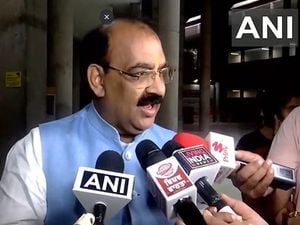The Union Budget 2025-26, unveiled by Finance Minister Nirmala Sitharaman, has been met with enthusiasm from industry leaders and experts due to its comprehensive approach to clean energy initiatives and manufacturing. The budget marks what many describe as a pivotal moment for India as it seeks to advance its clean energy sovereignty and bolster its circular economy.
Industry responses underline the budget's focus on electric vehicles (EVs), solar energy, and reforms aimed at enhancing the power sector. The government has eliminated import duties on several key components such as lithium-ion battery scrap, cobalt powder, and various waste materials, facilitating domestic manufacturing and innovation. According to Rajat Verma, Founder & CEO of LOHUM, this is “a watershed moment” for the nation, unlocking opportunities for technological advancements and reinforcing Atmanirbhar Bharat - India's vision of self-reliance.
Deepak Sharma, Zone President – Greater India and MD & CEO of Schneider Electric, emphasized the budget's alignment with the goal of 'Viksit Bharat', which promotes sustainable growth through innovative public-private partnerships. He noted the expansion of financial support mechanisms such as the PM Dhan-Dhaanya Krishi Yojana would significantly benefit around 1.7 crore farmers, strengthening rural development.
Expert views converge on the fiscal health of India's renewable energy sector. The Finance Minister confirmed allocation for the solar sector increased dramatically from ₹150.61 billion (~$1.73 billion) to ₹242.24 billion (~$2.79 billion), demonstrating the government's commitment to solar PV cells, EV production, and battery technologies. Notably, the National Green Hydrogen Mission's funding also saw boosts from ₹3 billion (~$34.6 million) to ₹6 billion (~$69.24 million), promising to drive innovations necessary for India's clean energy transition.
While the focus on EVs and solar technologies has piqued interest, some experts, like Suyash Gupta, Director General of the Indian Auto LPG Coalition, voiced concerns about the lack of emphasis on alternative fuel options. He argues the integration of technologies like Auto LPG, hydrogen, and biofuels could significantly diminish urban pollution levels. Gupta underscored the necessity for broader discussions surrounding alternative fuels, which were conspicuously absent during the budget rollout.
Akshit Bansal, Founder & CEO of Statiq, expressed optimism surrounding the goal of enhancing domestic production capabilities for EV batteries and high-voltage transmission standards, stimulated by the budget's allocation to the National Manufacturing Mission. He advocated for revisions to the GST structure surrounding EV charging infrastructure, aligning it with the lower tax rates on EVs themselves.
Critics of the budget pointed out the need for more detailed commitments toward comprehensive regulatory reforms. Sitharaman announced the establishment of a high-level committee aimed at overhauling non-financial sector regulations, which is expected to streamline business processes and facilitate transition toward cleaner energy sources. This move is pivotal as it aims to cultivate trust-based governance within the economy.
Further, the budget has made notable adjustments to customs duties for renewable technologies, focusing on reducing the taxation on solar cells from 25% to 20% and solar modules from 40% to 20%. These adjustments are poised to lower production costs and stimulate growth within the solar industry, reinforcing domestic supply chains and reducing reliance on imports.
More broadly, experts agree on the budget's potential to drive industrial growth, improve clean energy adherence, and offer much-needed support for alternative fuel solutions. The move to bolster support for nuclear energy with the introduction of the Nuclear Energy Mission will provide the country with additional tools to achieve its ambitious clean energy targets.
Girish Tanti, Vice Chairman of Suzlon, echoed the sentiment, emphasizing the budget’s alignment with the target of achieving 500 GW of non-fossil fuel energy by 2030. With plans to uplift India’s manufacturing sector alongside agriculture and clean energy, Tanti believes this will cultivate approximately three million green jobs.
This budget has cast India's clean energy future as more promising than ever, attracting investment and interest from both domestic and international stakeholders. While the focus on various sectors within clean energy has been broadly praised, the calls for increased support for alternative fuels and continued reforms signify the need for holistic, sustainable growth measures as India forges its path toward energy independence.



